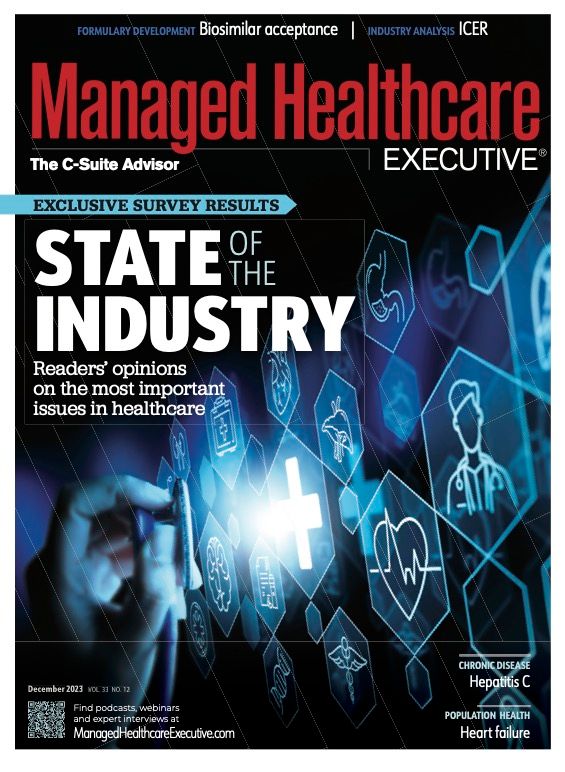Biosimilars are Ascendant
Acceptance is greater in oncology than in other specialties.
Biosimilars were supposed to capture market share from reference biologics but in the beginning, they didn’t have the mojo. How things have changed.

Biosimilars to Neupogen (filgrastim) and Neulasta (pegfilgrastim) now have well over 50% of the market that their reference products used to have to themselves, and the market share of biosimilars is steadily climbing.
Still, there is a great deal of variation, some of it due to the guidelines and the preferences of prescribers and patients. Industry observers say that formulary placement is going to be an increasingly important factor as biosimilars to biologics such as Humira (adalimumab) that are covered under the pharmacy benefit become a bigger part of the biosimilar picture.
“With the launch of the Humira biosimilars, we are now in the pharmacy benefit world,” says Jeffrey Casberg, M.S., vice president of clinical pharmacy at IPD Analytics and a member of Managed Healthcare Executive’s editorial advisory board.
Success in oncology
Like generics to small-molecule drugs, biosimilars to brand-name biologics came to be to lower prices. The price differences were modest to begin with but have widened since. For example, the first biosimilar to Remicade (infliximab), a commonly prescribed drug for autoimmune conditions such as Crohn’s disease and ulcerative colitis, was launched in 2016 at a price 15% lower than Remicade’s wholesale acquisition cost (WAC). Four years later, another biosimilar to Remicade was launched at a 57% WAC discount.
Samsung Bioepis, the major player in the biosimilar market and the manufacturer of several biosimilars, publishes a quarterly report on the biosimilar market. In its report for the fourth quarter of this year, the company said that three years after the first biosimilar enters a biologic’s market and starts to provide some competition, the average sales price — the price after various discounts have been applied — of biologics has declined, on average, by 41%.
Casberg says that biosimilars enjoyed a good track record since FDA approval of the first U.S. biosimilar, Zarxio (filgrastim-sndz), a biosimilar to Neupogen, in 2015. “When the first biosimilars came out, there (was) a little bit of hesitancy, even among us managed care pharmacists,” he says. “But now we’re 10 years in and there are no skeletons in the closet. I’m very happy because if there were a couple of bumps in the road, that could have really thrown off the whole industry, but there haven’t been. It’s been clean efficacy and clean safety.”
The Samsung Bioepis report notes that biosimilar uptake has been higher for oncology drugs than for drugs for other conditions and attributes the phenomenon to the darker reality of cancer treatment: “Due to disease progression, patients typically receive therapy for shorter durations, and new patients constitute a large portion of total treatments.” For example, in 2022, 57% of the people who were prescribed rituximab were new patients, according to the Samsung Bioepis report. Rituxan is the brand-name reference product of rituximab, and there are now three Rituxan biosimilars on the market: Truxima (rituximab-abbs), Ruxience (rituximab-pvvr) and Riabni (rituximab-arrx).
Another factor favoring oncology biosimilars is the endorsement of the National Comprehensive Cancer Network, which issues influential treatment guidelines; the Samsung Bioepis report says that the ”influence of respected medical societies on biosimilar usage cannot be overstated.”
The flip side to success in oncology is the slower uptake for other conditions. Casberg says that once they get a patient stabilized on a biologic, rheumatologists, gastroenterologists and dermatologists “don’t want to rock the boat.” The professional societies for those specialties have tended to be cautious about biosimilars. The American College of Gastroenterology, for example, favors biosimilars for new starts but firmly opposes insurer-mandated switching,
This year was supposed to be a watershed year for biosimilars because of the many Humira biosimilars hitting the market. So far, though, the eight that have launched have made little headway in dislodging Humira. The Humira biosimilar manufacturers may be experiencing what the Samsung Bioepis report calls “rebate walls” when the rebates from the manufacturer of the originator product protect market share even when biosimilars with lower WAC prices are available.
Tony Hagen is a medical, business and environmental editor and writer in Florence, New Jersey.
Peter Wehrwein is managing editor of Managed Healthcare Executive
David Calabrese of OptumRx Talks New Role, Market Insulin Prices and Other Topics 'On His Mind'
April 13th 2023In this month’s episode of the "What's On Your Mind podcast," Peter Wehrwein, managing editor of MHE connects with the now Chief Clinical Officer of OptumRx Integrated Pharmacies, David Calabrese. In this conversation, David touches on his transition in January as OptumRx’s former chief pharmacy officer and market president of health plans and PBMs to his new role as Chief Clinical Officer where he now focuses more on things such as specialty pharmacy to home delivery — with an overall goal of creating whole-patient care. Throughout the conversation, Calabrese also touched on the market’s hot topic of insulin prices and behavioral health services within the OptumRx community, among other topics.
Listen
Patients Prefer Sub-Q to IV, Review Finds
October 9th 2024Studies measuring patient preference stacked up in subcutaneous administration’s favor, according to a recently published review. The difference between subcutaneous and intravenous administration were less clear cut among the studies measuring health-related quality of life.
Read More
